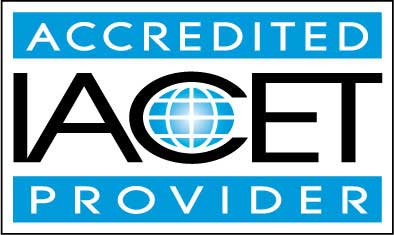Course Description
"Mastering SQL: From Novice to Expert"
In today's digital age, with data driving insights and decisions across industries, understanding the intricate dance of databases is paramount. Our in-depth course, "Mastering SQL: From Novice to Expert," provides a comprehensive journey into the heart of SQL, ensuring that even those without any prior SQL knowledge emerge as proficient database maestros by the end.
SQL: The Unseen Hero Behind Data
Structured Query Language (SQL) is the bedrock of modern databases. It's the primary tool that connects you with vast pools of data, ensuring you can store, retrieve, manipulate, and manage information effortlessly. Picture a sprawling library; if the books are data, then SQL is the skilled librarian guiding you to the exact information you seek.
Course Highlights:
-
Foundational Understanding: Begin with the basics as you delve into data structures, deciphering the intricacies of various SQL engines like Access, Oracle, and MySQL.
-
SQL Statements Unraveled: We demystify core SQL commands for you, from fetching data with SELECT, modifying it with UPDATE, adding it with INSERT, or removing it with DELETE.
-
Crafting & Designing Tables: Dive deep into the art and science of creating and designing tables – the fundamental blocks where your data resides.
-
Stored Procedures & Efficiency: Explore the power of stored procedures, reusable SQL scripts that enhance your efficiency, ensuring repetitive tasks don’t require continuous coding.
-
Advanced Concepts & Tools: Tackle advanced SQL tools and techniques. From leveraging cursors for traversing database records, harnessing transactions to ensure data remains pristine, to sculpting views for handling vast data panoramas – we’ve got it covered.
-
HD Video Demonstrations: Visual learners rejoice! Our high-definition video tutorials elucidate even the most complex concepts, ensuring clarity and comprehension.
Why "Mastering SQL: From Novice to Expert"?
Data is often called the "new oil." But raw data, like crude oil, isn't valuable by itself. It needs refining, understanding, and management. That's where SQL comes into play. As the linchpin of databases, SQL is a skill that's invaluable for anyone in the tech industry, be it database administrators, data analysts, or business owners seeking tailored insights.
By immersing yourself in our course, you’re not just learning a language; you're acquiring a toolkit that empowers you to harness data's potential, unlock insights, and pave the way for informed decisions.
Embark on this transformative journey, and evolve from an SQL novice to an adept database virtuoso, armed with the knowledge and confidence to navigate the vast seas of data with finesse and precision. Let the data revolution begin!
- Completely Online
- Self-Paced
- Printable Lessons
- Full HD Video

- 6 Months to Complete
- 24/7 Availability
- Start Anytime
- PC & Mac Compatible
- Android & iOS Friendly
- Accredited CEUs

Learning Outcomes
- Explain the significance of data types in SQL and demonstrate the ability to choose appropriate data types for different types of information in database design.#
- Identify and describe the four main SQL statements: select, insert, update, and delete, and demonstrate their use in managing database data.
- Construct a basic SQL SELECT statement to retrieve specific columns from a single database table based on given criteria.
- Demonstrate the use of SQL WHERE clause to filter data by matching specific conditions such as column values and date ranges.
- Apply the SQL UPDATE statement to modify specific records in a database while explaining the potential consequences of omitting a WHERE clause.
- Recognize the syntax for constructing a basic SQL UPDATE statement, including the use of the SET and WHERE clauses.
- Demonstrate the ability to write basic SQL INSERT statements to add new records to a database table, ensuring data type compatibility and proper syntax.
- Identify and utilize auto-increment features in SQL to avoid duplicating primary keys when inserting new records into a database table.
- Demonstrate the use of the SELECT statement to verify which records will be deleted before executing a DELETE operation in SQL.
- Recognize the importance of including a WHERE clause in DELETE statements to prevent accidental removal of all records in a table.
- Demonstrate the ability to filter query results using the WHERE clause with various conditions like comparison operators and the IN statement.
- Recognize the correct SQL syntax for sorting data using ORDER BY in both ascending and descending order.
- Define how to construct SQL queries using the IN condition to streamline multiple OR conditions, ensuring efficient data retrieval.
- Demonstrate mastery of lesson content at levels of 70% or higher.
Assessment Guide
| Assessment | Points |
|---|---|
| Course Introduction and Goals | 1 points |
| Lesson 1 Exam | 9 points |
| Lesson 2 Exam | 10 points |
| Lesson 3 Activity | 1 points |
| Lesson 3 Exam | 8 points |
| Lesson 4 Activity | 1 points |
| Lesson 4 Exam | 9 points |
| Lesson 5 Activity | 1 points |
| Lesson 5 Exam | 10 points |
| Lesson 6 Exam | 10 points |
| Lesson 7 Activity | 1 points |
| Lesson 7 Exam | 10 points |
| Lesson 8 Exam | 10 points |
| Lesson 9 Exam | 8 points |
| Lesson 10 Activity | 1 points |
| Lesson 10 Exam | 8 points |
| Lesson 11 Exam | 9 points |
| Lesson 12 Exam | 9 points |
| Lesson 13 Activity | 1 points |
| Lesson 13 Exam | 10 points |
| Lesson 14 Exam | 10 points |
| Lesson 15 Exam | 10 points |
| Lesson 16 Exam | 10 points |
| Final Exam | 73 points |


